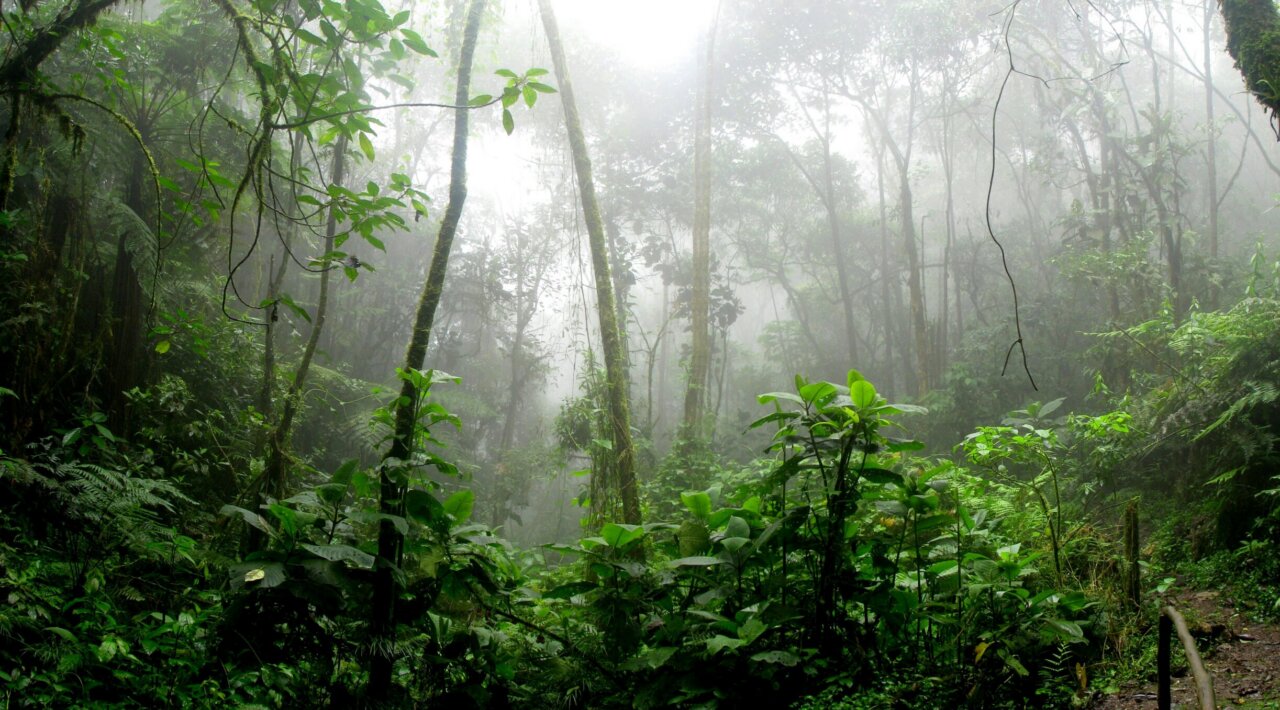This piece comes to us from the Wildlife Conservation Society (WCS).
Tropical rainforests regulate the global climate and sustain the planet’s richest biodiversity. Yet, despite more than a decade of government and corporate pledges to end tropical deforestation, the world lost a record 6.7 million hectares of tropical forests last year, an area more than twice the size of Belgium. Fires— many linked to logging, agricultural expansion, and climate-driven warming—fueled this surge in forest loss, especially across the Amazon, the Congo Basin, and Southeast Asia.
Unfortunately, neither the global south governments that retain sovereign responsibility for these forests, nor the Indigenous and other local communities who depend on them and serve as their most effective stewards, possess the means they need to protect their forests from the onslaught of global market demands that drive their loss and degradation.

Photo by Chennawit U/ Pexels.
A well-established “forest transition curve” suggests that forest-rich countries should sacrifice most of their forests in pursuit of capital for economic development before they can afford to invest in conservation and restoration. A novel financing initiative called the Tropical Forest Forever Facility (TFFF) could help break that pattern, enabling countries to “leapfrog” across the forest transition curve.
Unlike conventional conservation programs based on aid or grants, the TFFF is structured as an investment-based mechanism, with a target capitalization of $125 billion. The aim is to leverage the power of global capital markets to mainstream the conservation of tropical forests that provide essential services – like climate regulation and biodiversity conservation – to the global economy.
Sponsor countries and stakeholders make one-time, long-term investments that are reinvested in a diversified portfolio with estimated annual returns of around 8 percent, subject to market fluctuations. Once transaction costs and returns to investors are subtracted, TFFF net earnings are estimated at close to 3 percent.
Those net earnings would reward TFFF-eligible tropical countries that maintain low rates of deforestation and forest degradation—including Indigenous Peoples and local communities that protect those forests—and contribute to a permanent endowment to ensure these payments continue as long as tropical countries meet the agreed eligibility criteria.

Photo by David Riaño Cortés at Pexels.
Brazil has led this initiative, in collaboration with other tropical forest countries, prospective sponsors, experts from the World Bank, NGOs and think tanks. Brazil plans to formally launch the TFFF at the 30th Conference of the Parties to the UN Framework Convention on Climate Change (UNFCCC CoP30), which convenes later this year in Belém, near the mouth of the Amazon River.
The launch is expected to present not only the governance structure and operational rules of the TFFF but also the first group of tropical forest countries to adhere to the mechanism and the first round of investment pledges, signaling a new era of long-term, performance-based financing. The potential is game-changing, insofar as the TFFF could finally bring conservation from the margins to the mainstream of global capital markets.
The TFFF could benefit more than 70 countries. For example, the Congo Basin’s rainforests, which absorb more CO2 than their Amazonian counterparts and are home to the world’s second-largest rainforest, including some of Earth’s most iconic wildlife—forest elephants, chimpanzees, bonobos, and both lowland and mountain gorillas.

Photo by Jay Brand/ Pexels.
Complex carbon-market-based finance schemes have not proved amenable to a regional context characterized by limited governance and low investment in technical training and capacity development. Mounting pressure from global demand for minerals, timber, and agricultural expansion threaten forests throughout Central Africa and a large proportion of the human population is extremely poor.
The TFFF would provide Central African countries that maintain low levels of deforestation with investment capital needed to improve governance, technical training and capacity building, while incentivizing ongoing conservation efforts. At the same time, TFFF is designed to complement other forest finance mechanisms, not replace them.
The TFFF is structured to reward countries that maintain low rates of deforestation, based on the area of forest conserved or restored each year. The actual forest area cleared that year in each country would reduce the reward, with a smaller reduction imposed based on the area of forest degraded that year. Transparent systems for forest monitoring and for reporting on allocation of TFFF funds are required, and at least 20 percent of TFFF funds awarded each year must be allocated to Indigenous Peoples and local communities.
Remaining funds should be used to support policies and programs that contribute to conservation, help restore tropical rainforests or other ecosystems, strengthen monitoring systems, and safeguard the livelihoods of communities.

Photo by Quang Nguyen Vinh/ Pexels.
The TFFF concept was announced at the 28th Conference of Parties to the United Nations Framework Convention on Climate Change (UNFCCC CoP28) in Dubai. The successful launch of the TFFF at the coming UN Climate conference and its subsequent implementation would place nature at the core of climate action while also helping developing countries to halt and reverse biodiversity loss, and restore degraded ecosystems and lands.
In doing so, the TFFF would help achieve the objectives of several international agreements, including the UNFCCC’s Paris Agreement, the Kunming-Montreal Global Biodiversity Framework under the Convention on Biological Diversity, and the UN Convention to Combat Desertification. The TFFF could thus advance practical synergies among the three original Rio Conventions, fittingly led by the very country where these landmark treaties were first conceived in 1992.
All of us—and the forests we depend on most for climate regulation, biodiversity conservation, and innumerable products and services—would benefit from TFFF.
